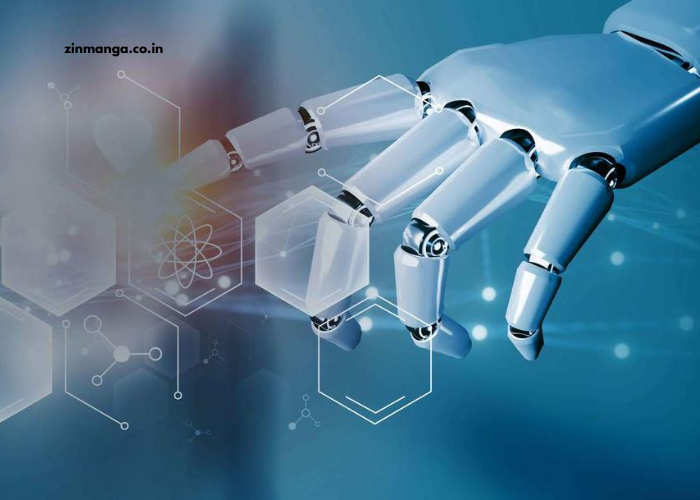In an era where technology is constantly evolving, the concept of a “connected future” has become central to many industries and everyday life. From smart homes to interconnected devices that communicate seamlessly, smart technology is transforming the way we live, work, and interact with the world around us. As we explore the role of smart technology in shaping the future, it’s clear that its impact will be far-reaching, driving efficiency, convenience, and innovation across numerous sectors.
This article delves into the key aspects of smart technology, its applications, benefits, and the challenges that come with this rapid transformation. We’ll explore how these technologies are paving the way for a more connected and sustainable future.
The Rise of Smart Technology
What is Smart Technology?
Smart technology refers to devices and systems that are capable of performing tasks autonomously or semi-autonomously through the use of sensors, artificial intelligence (AI), machine learning, and internet connectivity. These technologies are designed to improve user experience, optimize performance, and enhance productivity by connecting devices to the internet and enabling them to communicate with each other.
For example, smart thermostats can adjust the temperature of a home based on the user’s preferences and routines. Similarly, smart cars can communicate with other vehicles and infrastructure to improve safety and efficiency. In essence, smart technology is about creating a network of interconnected devices that work together to make life easier, safer, and more efficient.
The Role of IoT in Smart Technology
One of the driving forces behind the rise of smart technology is the Internet of Things (IoT). IoT refers to the network of devices, appliances, and vehicles that are connected to the internet, allowing them to collect and share data. The IoT ecosystem enables devices to interact with each other, making them smarter and more capable of adapting to user needs.
In smart homes, IoT plays a pivotal role. Devices like smart lights, smart locks, and voice-activated assistants can all be connected and controlled through a central hub, providing users with seamless control over their environment. In industries such as healthcare, IoT devices monitor patient vitals in real-time, sending data to doctors and medical professionals to provide timely care.
Key Applications of Smart Technology
Smart Homes: Revolutionizing Daily Living
The concept of a smart home is one of the most well-known applications of smart technology. A smart home uses connected devices and systems to automate and control various household functions. This includes lighting, heating, security, and even appliances like refrigerators and washing machines.
Smart home devices can be controlled remotely through smartphones or voice assistants like Amazon Alexa, Google Assistant, or Apple Siri. These systems allow homeowners to manage their environment with ease. For instance, homeowners can adjust their thermostat settings when they are away from home, ensuring they return to a comfortable environment without wasting energy. Similarly, smart security systems can monitor the premises and send real-time alerts to users about potential threats.
Smart Cities: Shaping the Future of Urban Living
Smart technology is also having a profound impact on urban environments. Smart cities use interconnected devices and systems to improve infrastructure, reduce waste, enhance public safety, and make services more efficient. For example, traffic management systems can use real-time data to optimize traffic flow, reducing congestion and pollution.
Smart streetlights are another example, as they can adjust their brightness based on traffic or pedestrian activity, helping save energy. Additionally, waste management systems can use IoT sensors to monitor the level of trash in bins and schedule pickups when necessary, reducing unnecessary trips and improving efficiency.
Healthcare: Enhancing Patient Care
The healthcare industry has seen significant advancements thanks to smart technology. Wearable devices such as smartwatches, fitness trackers, and health-monitoring gadgets can track vital signs like heart rate, blood pressure, and sleep patterns. These devices collect and analyze data, offering users valuable insights into their health.
In hospitals and medical facilities, smart technology is improving patient care by enabling real-time monitoring of patients’ conditions. Smart medical devices can detect early signs of complications, alert healthcare providers, and even administer medications automatically. This increased connectivity is enhancing the quality of care and ensuring that patients receive timely attention.
Retail and E-Commerce: Personalizing Customer Experiences
Smart technology is also transforming the retail and e-commerce sectors by enhancing customer experiences and streamlining operations. Retailers are using smart devices like digital signage, in-store sensors, and AI-powered recommendation systems to engage with customers in new and innovative ways.
For example, smart shelves can track product availability and automatically reorder items when stocks are low. Additionally, AI-driven chatbots and virtual assistants are enhancing online shopping experiences by helping customers find products, answer queries, and track deliveries.
Transportation: Making Travel Smarter
In the transportation industry, smart technology is contributing to the development of autonomous vehicles, electric cars, and more efficient logistics systems. Self-driving cars use sensors, cameras, and AI algorithms to navigate roads and avoid obstacles. These vehicles are expected to reduce traffic accidents, improve road safety, and offer more sustainable transportation options.
Additionally, smart logistics systems are optimizing supply chains by tracking shipments, predicting delivery times, and reducing fuel consumption. These systems leverage IoT sensors and data analytics to improve efficiency and minimize waste.
Benefits of Smart Technology
Convenience and Automation
One of the most significant benefits of smart technology is the convenience it offers. By automating routine tasks and providing real-time control, smart devices allow users to focus on what matters most. For instance, smart home devices can adjust the lighting, temperature, and security systems based on the user’s preferences, creating a more comfortable and hassle-free living environment.
In the workplace, smart tools like AI assistants, cloud-based systems, and automated processes help increase productivity by streamlining tasks and reducing the need for manual intervention. This allows businesses to focus on innovation and growth.
Enhanced Efficiency and Energy Savings
Smart technology contributes significantly to energy efficiency. Devices like smart thermostats, energy-efficient lighting, and intelligent appliances help reduce energy consumption by adjusting settings based on real-time data. For instance, a smart thermostat can learn the user’s schedule and adjust the temperature to optimize energy usage, reducing both costs and environmental impact.
In industries such as manufacturing, smart sensors and predictive analytics can optimize production processes, reduce downtime, and minimize waste. By making systems smarter, businesses can achieve higher levels of efficiency and sustainability.
Improved Safety and Security
Another key advantage of smart technology is enhanced safety and security. In smart homes, connected security cameras, doorbell cameras, and motion sensors can provide real-time monitoring and alerts. These systems allow homeowners to monitor their property remotely and respond quickly to potential security threats.
In public spaces, smart surveillance systems equipped with facial recognition and AI algorithms can help detect and prevent criminal activities, improving public safety. Additionally, smart vehicles equipped with sensors and safety features like automatic braking and collision avoidance are reducing accidents and saving lives.
Data-Driven Insights
Smart technology generates vast amounts of data, which can be analyzed to gain valuable insights. In the healthcare sector, data from wearable devices can be used to monitor patient health trends, detect early signs of illness, and provide personalized treatment recommendations. Similarly, in retail, data analytics can be used to understand customer preferences, predict demand, and improve inventory management.
By leveraging this data, businesses and organizations can make more informed decisions and tailor their services to better meet the needs of their customers.
Challenges of Smart Technology
Privacy and Security Concerns
While smart technology offers numerous benefits, it also raises concerns about privacy and security. The vast amount of data generated by connected devices can be vulnerable to cyberattacks if not properly secured. Personal information, health data, and financial transactions are particularly sensitive, and any breach could have serious consequences.
As smart devices become more prevalent, there is a need for stronger cybersecurity measures, encryption technologies, and regulatory frameworks to protect user data. Ensuring the privacy and security of data will be crucial to the continued growth and adoption of smart technology.
Interoperability Issues
Another challenge is the interoperability of smart devices. With numerous manufacturers creating smart devices and platforms, there is often a lack of standardization, making it difficult for devices to communicate with each other seamlessly. This can result in compatibility issues and frustration for users who want to integrate different devices into a single, cohesive system.
The development of open standards and universal protocols will be key to addressing interoperability issues and ensuring that smart devices work together smoothly.
Dependence on Internet Connectivity
Smart technology relies heavily on internet connectivity, which can be a limitation in areas with poor or unreliable internet access. In rural or remote areas, the lack of reliable internet infrastructure may hinder the adoption of smart devices and technologies. To overcome this, advancements in internet connectivity, such as the expansion of 5G networks, will be crucial to supporting the widespread use of smart technology.
The Future of Smart Technology
As we look ahead, the future of smart technology is filled with promise. Innovations in artificial intelligence, machine learning, and IoT will continue to drive the development of smarter devices and more connected ecosystems. From autonomous vehicles to AI-powered personal assistants, the possibilities are endless.
The continued evolution of smart technology will not only transform industries but also enhance the way we live and interact with the world. As the digital and physical worlds become increasingly intertwined, a connected future driven by smart technology is within reach.
Conclusion
Smart technology is revolutionizing every aspect of our lives, from our homes to our workplaces, healthcare systems, and transportation networks. The combination of IoT, AI, and machine learning is paving the way for a more connected and efficient future. While challenges remain, such as privacy concerns and interoperability issues, the potential benefits of smart technology are undeniable.
As we continue to innovate and refine these technologies, we can expect even greater advancements in the years to come. The future is undeniably smart, and the possibilities for a connected world are limitless.




